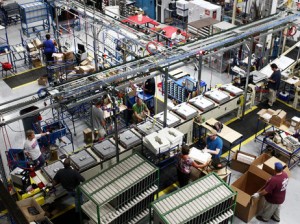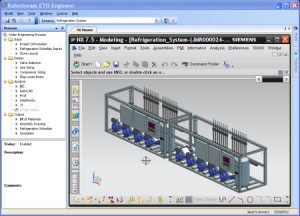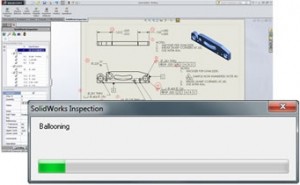Henry Ford, once rather famously said, “The customer can have it painted any color he wants, as long as it’s black.” Back in 1909 that type of business model worked. Customers clamored for the low prices offered by economies of scale, rather than a more expensive product that fit their unique needs.
Ford was able to meet this demand for affordable cars with a mass production business model that minimized variation, while maximizing efficiency. Today, however, the rules have changed.
Customers demand personalized products
Customers today want products tailored to their specific needs and personal tastes. Enter the era of mass customization. One definition of mass customization is developing a product architecture, within which an indeterminate number of products variants can be configured dynamically by the customer at the point of sale, and with minimal engineering intervention.
Demand for configurability and personalization presents a threat to traditional mass production techniques. According to the Smart Customization Group at MIT, by the year 2020, 15% of the clothing Americans buy will be customized for fit, color and style.

It’s not just highly personal products, such as clothing however. Automotive customers can mock up their dream ride using a simple design application on the company’s website or a smart phone app. Desktop and notebook computers are highly customizable for features and appearance.
It’s easy to see that customer collaboration in the design process is quickly becoming the norm, but manufacturers today still face a difficult conundrum: how do they improve their focus on customer demands by offering highly customized products, but still maintain the efficiencies of a mass-production model?
Different approaches to customization
Companies have taken a number of different approaches to solving this problem. Some negotiate contracts, estimate cost and effort, and assign engineering resources to develop products directly for customers. This model, known as Engineer-to-Order (ETO), is prevalent today in construction, aerospace and defense.
While this approach works for many companies, ETO falls short for a number of reasons. Since these products are unique to each order, the engineering processes used to develop these products are also unique as well. This lack of predictability is heavy on operating costs, and usually requires extensive engineering attention on a per-order basis, limiting time spent on innovation and new product development.
Other companies attempt to tweak the mass production model by pre-configuring a set of product variants, and mass-producing each variant. This model is not without its shortcomings. To produce predictably and efficiently, the number of variations must be strictly limited.
A company whose customers’ needs are unpredictable, or require a substantial number of product variations, may find that pre-defining a massive number of bills of material (BOM) combinations can be difficult or impossible.
Benefits of a modern mass customization model
As the product of a marriage between mass-production and ETO, mass customization allows businesses to inherit the dominant traits of each: high efficiency paired with a high degree of customer focus. The following are some of the business opportunities inherent in this approach:
Customer satisfaction. Delivery times are shortened, extraneous features are reduced, and the utility offered to each individual customer is maximized. A mass customization strategy can help to ensure accurate quotes, lead times, and interpretation of customer requirements.
Business value. Products that are configured to meet unique customer needs have the potential to reach a wider audience, and have a greater range of application than those that are mass-produced, offering companies the chance to increase the footprint in their respective markets. Also a company optimized for mass customization minimizes the costs of order fulfillment.
Innovation. By solving order fulfillment problems, engineers can focus on new product development, innovative R&D projects, and designing new configuration options for the products in existing portfolios. Mass customization also creates an interface between the manufacturer and the customer, enabling collaboration and open innovation.
Mass customization presents an enticing promise, but as a manufacturing trend it is still in its infancy, and companies may find that the availability of industry testimonials and academic research is under-developed. The bottom line, however, is that all companies must find out how to make some type of mass customization work for them.
Mass customization has the potential to help companies increase revenue and gain competitive advantage, improve cash flow, and reduce waste through on-demand production. Mass customization can also generate valuable data that may be used in the development of standard products and in online marketing and public-relations campaigns.




